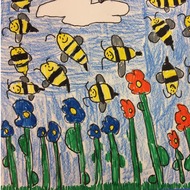(View Complete Item Description)
In this lesson, we learn how insects can fly in the rain. The objective is to calculate the impact forces of raindrops on flying mosquitoes. Students will gain experience with using Newton's laws, gathering data from videos and graphs, and most importantly, the utility of making approximations. No calculus will be used in this lesson, but familiarity with torque and force balances is suggested. No calculators will be needed, but students should have pencil and paper to make estimations and, if possible, copies of the graphs provided with the lesson. Between lessons, students are recommended to discuss the assignments with their neighbors.
Material Type:
Activity/Lab,
Lecture Notes,
Lesson Plan
Author:
David Hu




















